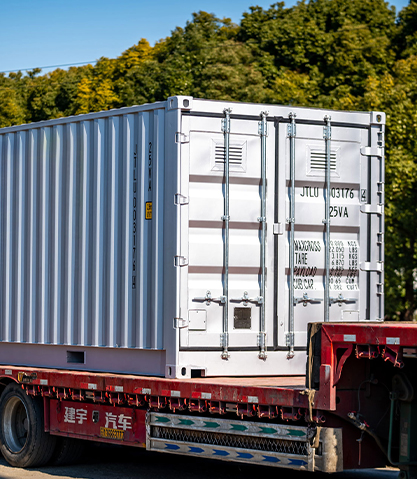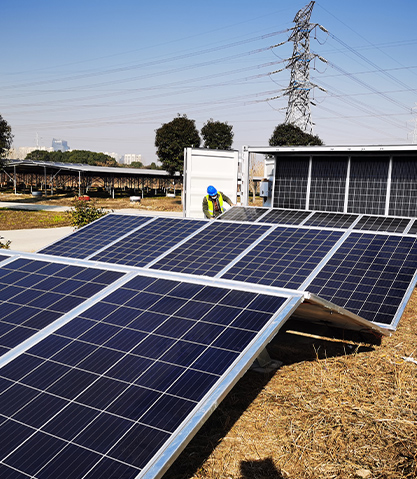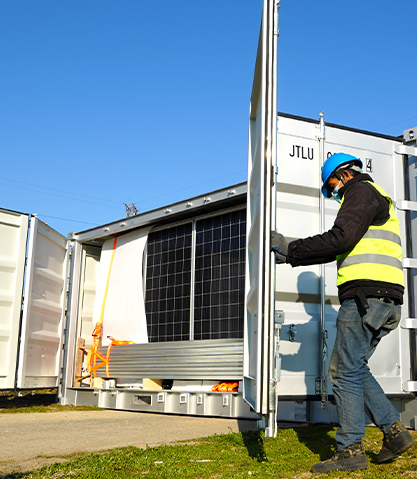Microgrids are rapidly emerging as a pivotal solution to Africa’s persistent energy access challenges. This report, grounded in the latest industry data and academic research, offers an in-depth analysis of the development status, techno-economic characteristics, challenges, and future outlook of microgrids in Africa. Although microgrid deployments in the region have increased sixfold over the past decade, significant acceleration is still required to achieve universal electrification by 2030. Solar hybrid microgrids have become the mainstream solution, with the average levelized cost of electricity (LCOE) projected to fall from \$0.55/kWh in 2018 to \$0.20/kWh by 2030. However, high capital expenditures, financing barriers, regulatory constraints, and weak demand stimulation remain major obstacles. Against this backdrop, Senta’s containerized power generation solutions present new opportunities for microgrid expansion in Africa, combining advanced technology with innovative deployment models. The report recommends a multidimensional strategy encompassing innovative financing mechanisms, regulatory reform, technical standardization, and community engagement, leveraging the advantages of Senta’s modular power generation units to accelerate the spread of sustainable energy.
01. Current Status of Microgrid Development in Africa
1.1 Market Overview
Africa’s microgrid sector has grown significantly over the past decade, with installations increasing more than sixfold since 2018. According to the African Minigrid Developers Association (AMDA), its members have deployed nearly 600 microgrids across 19 sub-Saharan countries, totaling over 16.5 MW of installed capacity and serving approximately one million rural and peri-urban residents. The International Energy Agency (IEA) estimates that by 2030, microgrids will account for 48% of new electricity connections across Africa, making them a key pathway to achieving the Sustainable Development Goals.
Geographically, Nigeria, Uganda, and Madagascar are among the most active countries in microgrid deployment. Nigeria’s Rural Electrification Agency (REA), through the Nigeria Electrification Project (NEP), has completed 173 microgrids with another 215 under development. In Uganda, 178 sites have been awarded through phased tenders with support from the EU and KfW Development Bank. Madagascar features 29 private companies operating over 220 microgrids. The average number of connections per microgrid is 592 in West and Central Africa, significantly higher than the 209 connections typical in East and Southern Africa.
Senta’s containerized power generation solutions can be flexibly integrated into these diverse regional deployment scenarios. Their high-efficiency generation systems are adaptable to various load profiles and site conditions, supporting microgrids with stable and reliable electricity. Whether in densely populated West Africa or more dispersed rural areas elsewhere, Senta can offer tailored solutions.
Among its product offerings, Senta’s foldable photovoltaic (PV) power containers use standard ISO container structures and integrate PV panels, inverters, controllers, battery storage, and smart energy management systems—forming mobile solar power stations.
Key technical advantages include:
Foldable PV Panel Technology: Equipped with a retractable system, PV panels can be folded and deployed rapidly, reducing container volume by more than 50% for easier transportation.
Bifacial PV Modules: Utilizing N-type TOPCon or HJT solar cell technologies, panels generate power on both sides with conversion efficiencies exceeding 23%, 10–15% higher than traditional monocrystalline silicon.
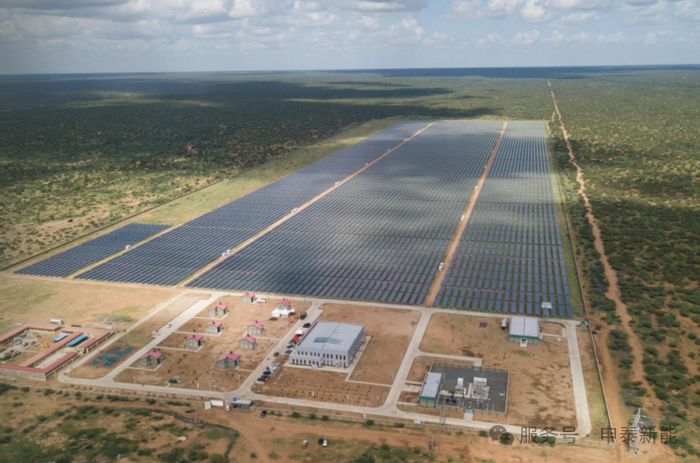
Use Case Examples:
Sub-Saharan Africa: Over 570 million people remain off-grid, with less than 40% grid coverage.
Solution: Deploy foldable PV containers in island or desert villages to power 50–200 households for lighting, refrigeration, and TV use, replacing costly diesel generators.
Infrastructure projects across Africa are growing at 8% annually, but temporary power remains diesel-dependent.
Solution: On construction sites, Senta units can supply continuous 8-hour power for mixers and tower cranes, reducing diesel logistics. In Congo (DRC) cobalt mining zones, pairing foldable PV containers with storage systems supports night-time drilling. A South African gold mine cut diesel use by 75%, saving \$1.2 million in annual fuel costs.
Natural disasters affect over 20 million people annually in Africa. Fast power restoration is critical within the 72-hour golden rescue window.
Solution: In hurricane/flood zones, Senta units can be airdropped to power emergency medical centers and water purification systems. In drought-prone areas, integration with solar water pumping systems ensures access to safe drinking water.
Africa’s mobile economy is valued at \$180 billion, yet remote base stations face unstable power supply.
Solution: For mobile fleets and cross-border transport, Senta systems provide energy for air conditioning and refrigeration, extending trip range. In Nigerian rural telecom sites, foldable PV containers extend off-grid tower operation from 4 to 72 hours.

1.2 Technological Composition
Africa’s microgrid technology mix has undergone a notable transformation. Solar PV’s share in microgrid configurations jumped from 14% in 2018 to 59% in 2024, while diesel systems fell from 42% to 29%. This shift is driven by falling solar module prices (over 80% drop) and an 85% cost reduction in lithium battery storage since 2010, along with a global push toward decarbonization.
Three dominant microgrid architectures are currently in use:
1. DC Microgrids: Suitable for low-power applications, offering high efficiency but limited transmission range. Senta’s generation containers can seamlessly integrate with DC microgrids, providing steady power for small communities and targeted facilities.
2. AC Microgrids: Compatible with traditional appliances and easier to interconnect with the main grid in the future. Senta systems support AC output, enabling smooth integration with conventional appliances and grid interconnection when needed.
3. Hybrid AC/DC Microgrids: Combining the strengths of both systems, increasingly popular. Senta’s modular designs can be configured for both AC and DC outputs, optimizing power distribution for diverse consumption patterns.
Emerging Mesh-Grid technology is also gaining traction. According to CrossBoundary Innovation Lab, mesh grids reduce deployment costs by 41% and increase connection speed by 50% compared to traditional microgrids. Pilot projects in Nigeria and Haiti have demonstrated strong performance. Senta is actively exploring synergies between its modular generation arrays and mesh-grid configurations, enhancing deployment efficiency and lowering total system costs through smart controls and modular scaling.
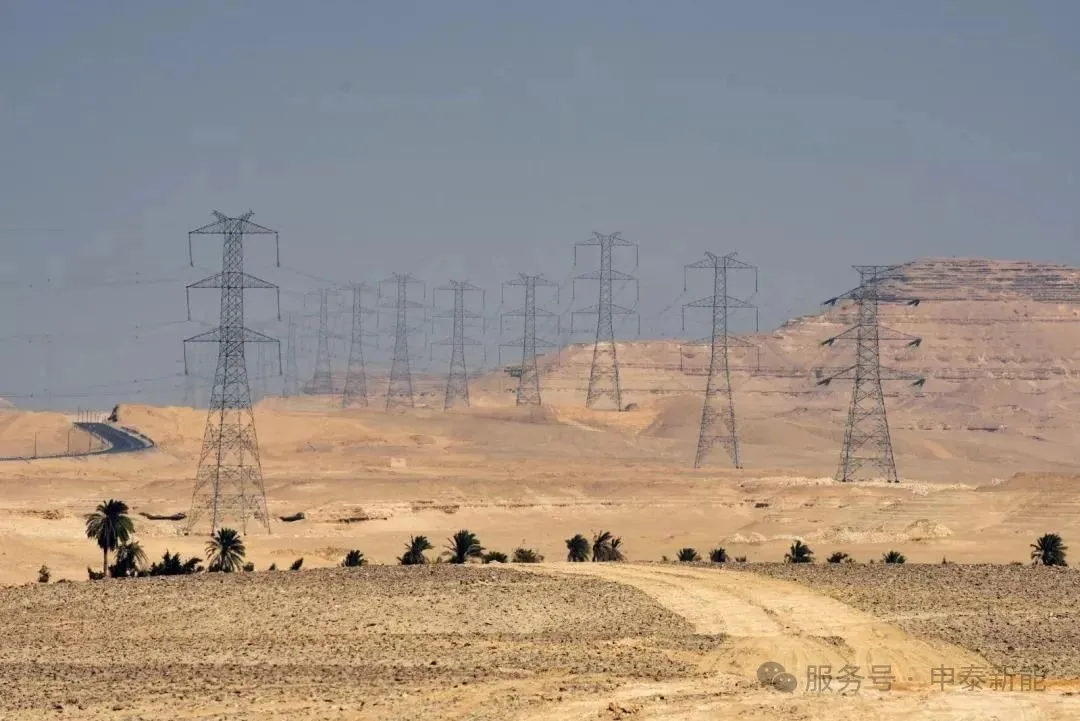
1.3 Economic and Social Impact
Microgrid cost structures vary significantly. According to AMDA, fully deployed microgrids have capital expenditures (CAPEX) per connection point ranging from \$1,046 in West Africa to \$775 in East Africa. Operational expenditures (OPEX) range from \$3 to \$28 per month per connection. Although tariffs are generally higher than national grid rates, they remain substantially below diesel generation costs—about \$0.25–0.40/kWh in Nigeria, compared to \$0.79/kWh in Haiti.
Senta’s foldable PV containers help reduce total microgrid costs through advanced system design and efficient operation. Their high energy conversion efficiency reduces power losses and operational costs, while modular construction simplifies installation, maintenance, and upgrades—lowering long-term CAPEX.
Wider Socioeconomic Benefits:
Job Creation: AMDA reports that 27 member developers created over 6,000 jobs in the past four years, mostly within local communities. Senta emphasizes local hiring and training during all project phases—from installation and commissioning to maintenance and management—boosting local employment and capacity-building.
Gender Inclusion: Women account for 30% of the microgrid workforce, significantly higher than in traditional energy sectors. Senta promotes gender equality through inclusive hiring practices and targeted training programs that empower women to participate in technical and managerial roles.
Improved Public Services: Schools and health centers connected to microgrids report better educational and healthcare outcomes. Senta’s reliable power systems support multimedia education tools and critical medical equipment, ensuring high-quality learning environments and effective patient care.
02. Key Challenges and Barriers
2.1 Financing Constraints
The funding gap remains enormous. According to the World Bank, achieving universal electrification via microgrids in Africa by 2030 will require \$91 billion in investment to build approximately 160,000 systems. However, annual current investment stands at under \$5 billion, heavily reliant on limited development finance sources:
Sustainable Energy Fund for Africa (SEFA): \$500 million
Africa Minigrid Program (AMP): \$50 million
Universal Energy Facility (UEF): A results-based financing mechanism
Private sector capital accounts for only 20% of total investment. Commercial banks typically demand high return rates (15%–25%), far exceeding the actual returns from most microgrid projects (8%–12%). Currency risk further complicates financing—most African currencies are highly volatile, while microgrid equipment is largely imported and revenues are denominated in local currency.
2.2 Policy and Regulatory Environment
Weak regulatory frameworks are a widespread issue. According to the African Forum for Utility Regulators (AFUR), only 30% of African countries have enacted specific regulations for microgrids. Common problems include:
Lengthy permitting processes: In some countries, obtaining all necessary permits can take 18 to 24 months.
Tariff uncertainty: For example, Tanzania’s 2019 regulatory revision unexpectedly altered the tariff calculation methodology, disrupting developer planning.
Lack of interconnection standards: Most countries lack clear technical guidelines for connecting microgrids to the national grid.
2.3 Technical and Operational Challenges
Demand-side issues are particularly pronounced. In rural Africa, the average monthly electricity consumption ranges from just 10–24 kWh—well below the \~50 kWh threshold typically needed to ensure microgrid financial viability. A major constraint is the lack of productive use of energy (PUE)—only 15% of microgrids currently supply more than 30% of their electricity to productive loads (e.g., agro-processing, water pumping).
Technical fragmentation is another concern. Incompatible smart meters, inverters, and control systems from different manufacturers create interoperability issues and complicate operations. Moreover, only around 60% of sites have remote monitoring systems, limiting the ability to perform preventive maintenance.
Senta’s response to these challenges includes the development of productive-use solutions tailored to rural African communities, such as support for agricultural processing and water systems. Senta’s power container products also adhere to unified technical standards, ensuring interoperability across devices. Their smart control systems enable centralized monitoring and management, enhancing operational efficiency while reducing maintenance costs.
03. Innovative Practices and Solutions
3.1 Business Model Innovation
Anchor-client models are becoming increasingly common. By signing long-term power purchase agreements (PPAs) with high-consumption clients such as telecom towers, agro-processing facilities, and healthcare centers, developers can improve revenue stability and project bankability.
Case studies:
Zangamina Microgrid in Zambia: Anchored by three telecom towers and one commercial farm, ensuring a stable baseline income.
Sierra Leone’s RREP Project: Adopted a “supplier–offtaker” model, where microgrid operators directly manage agro-processing businesses.
Community ownership models have proven successful in countries like Liberia and Uganda. For instance, Totota Village established a fully community-owned power cooperative that has operated for seven years with a 93% payment collection rate—far higher than the 70% average for private operators.
Senta actively promotes the community ownership approach, engaging local communities in the early planning stages to understand their needs and priorities. Through training and outreach programs, Senta helps increase awareness and participation. Community members are encouraged to invest in and help construct the system. Once operational, a cooperative formed by the residents manages the microgrid, with Senta providing technical support and operations & maintenance services to ensure long-term system stability.
3.2 Financial Innovation
Blended finance has emerged as a breakthrough strategy. Notable examples include:
Nigeria Climate Finance Facility: Backed by a £10 million first-loss guarantee from the UK’s Foreign, Commonwealth & Development Office, unlocking ₦155 million (approximately \$2 million) in commercial lending.
CrossBoundary’s “Minigrid-as-a-Service” model: Bundles microgrid projects into investment portfolios to attract institutional capital.
Results-based financing (RBF) is also gaining momentum. The Universal Energy Facility (UEF), managed by the World Bank, disburses subsidies based on verified electricity connections—e.g., \$592 per connection in Sierra Leone. Over 80,000 new connections have been supported so far.
Senta actively participates in RBF programs, collaborating with governments and international organizations. By optimizing project design and operations, Senta maximizes connection rates and operational efficiency to meet performance milestones, unlock subsidies, and scale deployment.
3.3 Technological Innovation
Digital technologies are playing a critical role in the evolution of microgrid operations:
Kenya’s SteamaCo: Uses a cloud-based monitoring platform that transmits 98% of metering data in real time.
Nigeria’s Havenhill: Implemented a blockchain-based prepaid system that has reduced operating costs by 15%.
Modular designs are further driving down costs. For example:
Powerhive’s standardized microgrid kits cut deployment time from 12 weeks to just 4 weeks.
Solarworx’s 72V DC mesh-grid allows for “plug-and-play” expansion.
Senta applies similar modular principles in its power container systems, integrating generation, storage, and control subsystems into individual, self-contained modules. Each module is functionally independent and equipped with standardized interfaces, enabling flexible configuration and expansion according to project needs. During deployment, modules are shipped to the site for quick assembly and commissioning—dramatically reducing installation time and costs.
Additionally, the modular approach simplifies maintenance and upgrading. If one power unit encounters a fault, it can be swiftly replaced without shutting down the entire system, improving overall microgrid reliability and uptime.
04. Future Outlook and Recommendations
4.1 Market Forecast
Based on current development trajectories, Africa’s microgrid sector is expected to follow three major trends by 2030:
Scaling Up: The average project size will grow from the current 25 kW to between 100–500 kW, serving 500 to 2,000 households.
Hybridization: More than 80% of systems will adopt hybrid configurations combining solar PV, diesel, and battery storage, while pure diesel systems will be virtually phased out.
Smart Integration: 80% of newly deployed microgrids will incorporate AI-driven demand forecasting and fault diagnostics.
Regional disparities will continue to shape deployment strategies. West Africa, with its higher population density and stronger payment capacity, is poised to be the fastest-growing market. In contrast, East Africa will rely more heavily on international aid to support deployment.
Senta will tailor its market strategies in line with these regional dynamics. In West Africa, the company will strengthen marketing efforts and introduce high-performance microgrid solutions suited for large-scale users. In East Africa, Senta will enhance cooperation with aid organizations, actively participating in donor-funded programs and providing reliable microgrid products and services.
4.2 Strategic Recommendations
Policy Level:
Establish a standardized permitting process to reduce approval time to within six months.
Implement differentiated subsidies that provide higher capital expenditure (CAPEX) support for remote areas—e.g., the Nigeria Electrification Project (NEP) model.
Develop a structured grid interconnection framework, defining technical standards and compensation mechanisms for microgrid-to-main-grid transitions.
Senta will proactively engage with government stakeholders to support the formulation and implementation of favorable microgrid policies, helping to build an enabling regulatory environment.
Project Implementation Level:
Adopt phased investment strategies, starting with the construction of core network infrastructure and gradually expanding coverage.
Develop localized productive use of energy (PUE) solutions, such as agricultural machinery rental services or shared cold chain infrastructure.
Establish regional operations and maintenance (O\&M) centers to leverage economies of scale.
Senta will follow a phased development model to ensure orderly project execution. At the same time, it will develop PUE solutions aligned with local economic activities to enhance electricity consumption and economic impact. By setting up regional O\&M hubs, Senta will optimize resource allocation, improve service efficiency, and reduce long-term maintenance costs.
Financial Level:
Expand access to local currency financing instruments, such as the African Development Bank’s Partial Credit Guarantee (PCG) mechanisms.
Support South-South technology transfers, encouraging the adaptation of proven Asian microgrid technologies to Africa’s unique environmental and market conditions.
Promote the establishment of cross-border certification systems to reduce compliance costs for imported equipment.
Senta will explore local currency financing options by partnering with regional financial institutions and developing diversified funding channels. It will also foster technical exchanges with Asian countries, introducing mature microgrid technologies and adapting them to African contexts through localized innovation. By advocating for harmonized equipment certification standards across countries, Senta aims to increase product compatibility and reduce import costs.
05. Conclusion
Africa’s microgrid development has evolved beyond the pilot phase into a stage of scaled deployment, now standing as a core solution for rural electrification. Despite persistent challenges in financing, policy, and operations, the sector is demonstrating growing innovation and vitality. Technological advancements and evolving business models are reshaping the industry landscape.
Senta’s containerized power generation systems and integrated microgrid solutions—through their cutting-edge technologies, innovative commercial models, and strong commitment to social responsibility—are contributing significantly to the momentum of Africa’s energy transition.
To achieve the 2030 electrification targets, annual investment must triple to \$15 billion. This calls for closer partnerships among governments, developers, and the international community. Crucially, microgrids must be fully integrated into national electrification plans rather than treated as temporary substitutes. Through collective effort, microgrids can go beyond addressing energy access—they can become a powerful catalyst for rural economic transformation across Africa, ultimately realizing the vision of energy justice and sustainable development.
Senta stands ready to collaborate with all stakeholders in driving Africa’s energy transition and contributing to its broader economic progress.

 English
English 中文简体
中文简体 عربى
عربى
